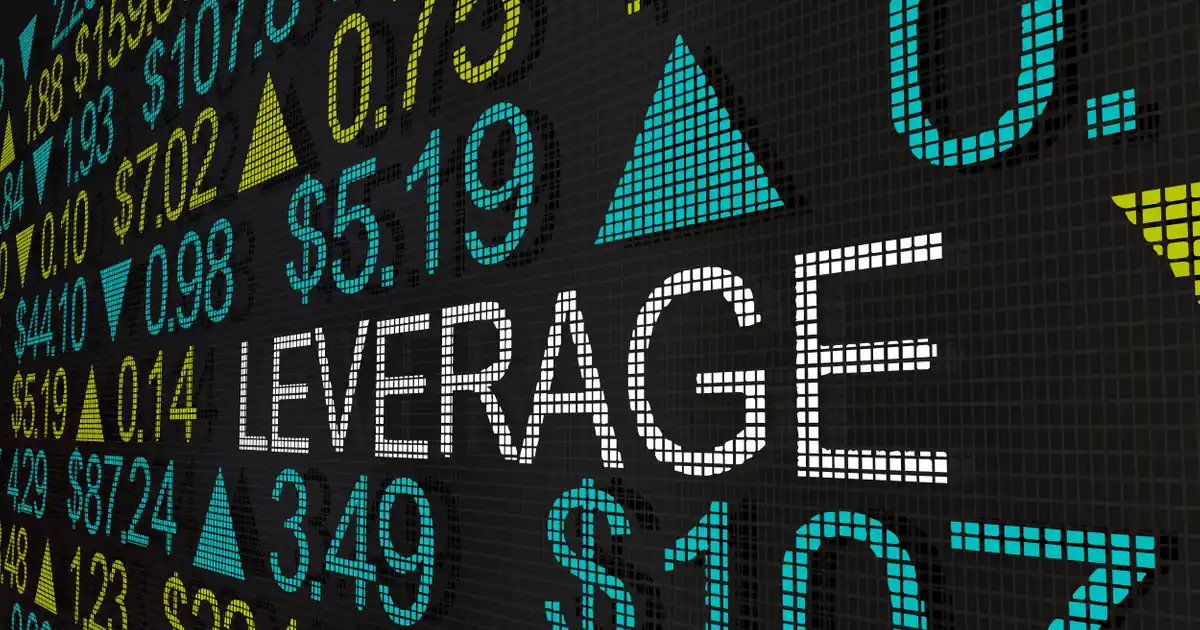Financial leverage is the use of borrowed money (or debt) to finance the purchase of assets. The expectation is that the income or capital gain from the new asset will exceed the cost of borrowing. Essentially, the term “leverage” refers to “debt.”
Investors often borrow money to buy stocks with the expectation of making a profit. They hope the value of the stock gains will exceed the interest being charged on the loan they originally took out to buy the stock. This is called “leveraged investing” or “buying on margin.”
Regarding businesses, companies will often borrow money to buy assets like machinery, equipment, buildings or office space, or vehicles. In most cases, they offer up existing assets to the lender as collateral. When the new investments in the business produce growth, the company can easily manage the cost of borrowing. Any time an individual or business borrows money to purchase assets, it’s known as “financial leverage.”
How Financial Leverage Works
When purchasing assets, there are typically three options. Companies can use cash on hand (equity), take on debt (leverage), or by leasing the asset (renting). Apart from using equity, the other options incur fixed borrowing costs. Companies plan for that, expecting the fixed costs to be lower than the new income that the asset will earn.
For example, let’s assume a company wants to acquire an asset that costs $100,000. The company can either use equity or debt financing. If the company opts for the first option, it will own 100% of the asset. There will be no interest payments.
Alternatively, the company may go with the second option and finance the asset using debt. In this case, the company doesn’t have to pay $100,000 up front. Instead, the asset is purchased with a loan that consists of lower monthly payments of $5,000 made over a 20-month repayment period. However, the lender charges 5% interest on the loan. It’s not that different from your standard car loan, except on a larger scale.
How To Measure Financial Leverage
Debt-to-equity ratio is used to determine the amount of financial leverage of an organization. It shows the proportion of debt, compared to a company’s equity. It helps the company’s management, lenders, shareholders, and other stakeholders to understand the level of risk in the company’s capital structure.
Basically, a debt-to-equity ratio demonstrates how likely a company (or person) is to repay their loans. It may also hint at any difficulties they will have in meeting their debt obligations. It will also reveal whether the levels of leverage are actually manageable or not. The average debt-to-equity ratio in the U.S. is 54.62%. It’s highest among companies in the manufacturing sector, which often have to invest in expensive machinery and equipment.
 Shutterstock
ShutterstockRisks Of Financial Leverage
While financing asset purchases through leverage is a common practice, it does carry certain risks with it. Financial leverage might result in enhanced earnings for a company. However, it can also result in disproportionate losses.
Losses may occur when the interest payments for the asset overwhelm the borrower. This usually happens if the returns from the asset are not high enough. This may occur when the asset declines in value or interest rates rise to extremely high levels.
Stock Volatility
Financial leverage can impact the stock price of a publicly traded company. Increased amounts of debt can lead to big swings in a company’s profits. Profitability is often a factor that moves stock prices higher or lower.
A company’s stock price might rise and fall more frequently if heavily leveraged. It could hinder the proper accounting of stock options owned by company employees. Higher stock prices can also lead to companies paying higher interest to shareholders.
Bankruptcy
Perhaps one of the biggest risks of financial leverage is that it can lead to bankruptcy. Any business (or individual) can enter bankruptcy if it becomes unable to meet its rising debt obligations. This will provide a measure of protection from their creditors.
With looming unpaid debts, creditors may file a case in bankruptcy court to have the business assets auctioned off in order to retrieve their owed debts. In the end, a bankruptcy filing can lead to the dissolution of a company.
Restrictions On Borrowing
Some of the risks of taking on high levels of debt are not being able to secure new loans or paying extremely high interest rates. When lending out money, banks carefully assess an organization’s level of financial leverage. For companies with a high debt-to-equity ratio, lenders are less likely to advance additional funds, since there is a higher risk of default.
However, if the lenders agree to advance funds to a highly leveraged, or a deeply indebted firm, it will lend at the highest interest rate possible to compensate for the higher risk of default that’s involved. That makes the cost of borrowing even higher.
Operating Leverage
Another type of common leverage among businesses is “operating leverage.” This is defined as the ratio of fixed costs to variable costs incurred by a company in a specific period.
If the fixed costs exceed the amount of variable costs, a company is considered to have high operating leverage. Such a firm is sensitive to changes in sales volume. That volatility may affect the firm’s returns on invested capital.
High operating leverage is common in capital-intensive firms, like the manufacturing industry. Those companies typically require a huge number of expensive and specialized machinery to manufacture their products. Those companies will need to pay for fixed costs (salaries, debt costs, machine maintenance) regardless of their sales volume. If sales are slow, those leveraged assets may not be able to even pay for themselves.
 Shutterstock
ShutterstockLeverage Vs. Margin
There is a distinction between debt known as “margin” versus leveraged debt. Margin is a special type of debt that involves using existing cash or stocks as collateral in order to increase one’s buying power in financial markets.
Margin allows investors to borrow money from a broker for a fixed interest rate, in order to purchase securities, options, or futures contracts. Like any investor, margin borrowers anticipate receiving higher returns than the interest they are paying. That means they still come out ahead, financially speaking.
The Bottom Line
Simply put, financial leverage is when a person or business borrows money to buy an asset. The purchased asset can be anything, but frequently includes items ranging from machinery and equipment, to property and land. It can also be less tangible items, like shares of publicly traded companies on the stock market.
Financial leverage is similar to other types of borrowing involving a bank or lender. One party takes out a loan, agreeing to pay it back over a set period of time, and with a set borrowing cost. The borrower then uses the money to buy something that they hope will actually make them more money than the loan is costing them.
While financial leverage can help companies purchase the items they need to grow, expand, and enhance their profits, it can also be risky. If the purchases asset doesn’t produce the required income, the entire loan will go underwater. That could force massive expenditure cuts, bankruptcy, or even the dissolution of entire companies.








